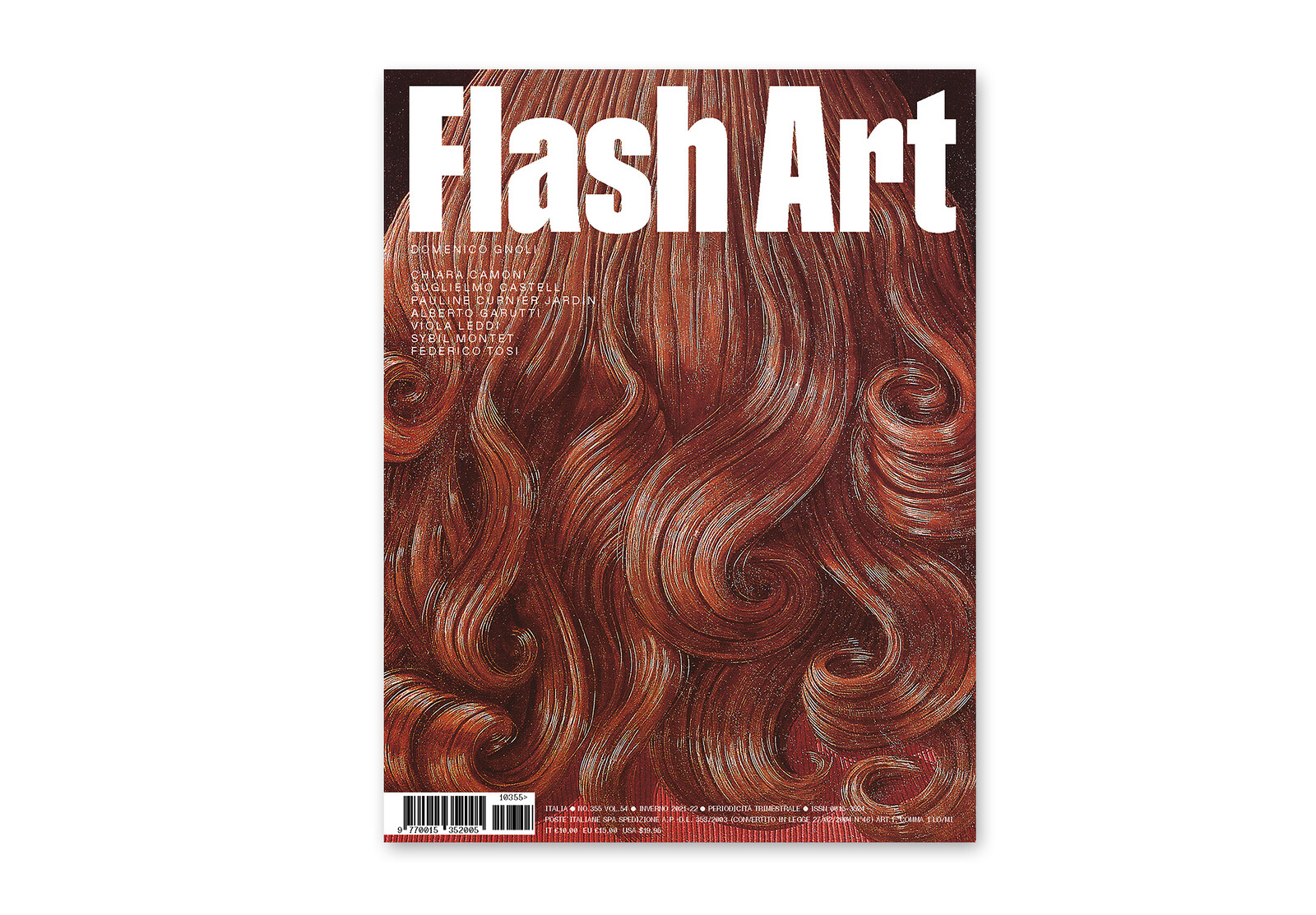This issue, which arrives at the turn of the new year, heralds a rethinking of the Italian edition as a kaleidoscopic survey of the most disparate forms of research on the national scene. If, on the one hand, there is a renewed commitment to traditional media and to a purely material dimension, at the same time we perceive a push toward other languages and dimensions, eventually arriving at a Metaverse, as Alessandro Bava addresses in his column SPAZIO.
Domenico Gnoli’s iconic depiction of red locks of curly hair—our cover story for this issue—with its detailed imagery and photographic cropping, is a signature work by an artist whose legacy is finding new popularity among a younger generation. Fifty years after his death, he is being celebrated by Fondazione Prada in Milan with a retrospective that is also the final curatorial project of Germano Celant. This issue’s dossier dedicated to the artist, with an archival publication as well as an Amarcord by Giancarlo Politi, responds to the magazine’s wish to reexamine historic works through a new lens, highlighting aesthetic turns that have found new relevance in the present.
Also in this issue, publishers Gea Politi and Cristiano Seganfreddo join Guglielmo Castelli in retracing his pictorial practice in all its chromatic and conceptual nuances; Maurizio Bortolotti analyzes the intimate and foundational relationship between Italian art and landscape in the work of Alberto Garutti; Camilla Paolino questions the historical representation of female sexuality in Western culture via the iconography of the sleeping woman in the pictorial imagination of Viola Leddi; and Federico Tosi confronts his practice in a sui generis dialogue with Alfredo Aceto, in which their thoughts range from the strictly practical to the universal.
Cecilia Canziani brings an intimate approach to the work of Chiara Camoni, noting how each of her works evoke the form and function of the home, which is not, however, an abstract space, but a weaving of relationships and gestures. Similarly, the work of Pauline Curnier Jardin is described by Chus Martínez, in the final chapter of her column The Age of Love, as an effort to eliminate the binaries that separate conscious and unconscious processes.
Moreover, in this issue we inaugurate the section CROSS/ROADS, curated by Ilaria Gianni and Eleonora Milani, which intends to map a series of projects, residencies, and exhibitions in geographical areas of Italy that, although more or less distant from the mainstream system of contemporary art, are able to create a dialogue with it despite conventionally recognized dynamics. The first episode is dedicated to Lecce and includes Progetto, Pia Studio, Studioconcreto, Spazio Su, Palai, and Salgemma. Meanwhile Sybil Montet for Bava’s column SPAZIO conceives of a visual project that she defines as a “cinematographic essay,” a fictitious space as well as the second opus of the series “CYPHER” dedicated to ongoing research on subliminal narratives, myth-making, and miraculous photorealism through CGI technology.
Reviews: Maurizio Cattelan, Breath Ghosts Blind, Pirelli HangarBicocca, Milan / Simone Fattal, A breeze over the Mediterranean, ICA, Milan / Maria Lai, Il tempo dell’incalcolabile M77, Milan / A.B.O. THEATRON. L’arte o la Vita, Castello di Rivoli / Techno, Museion, Bolzano / Nana Wolke, Some Girls Wander By Mistake, Fondazione Coppola, Vicenza / TARWUK, Ante mare et terras, Collezione Maramotti, Reggio Emilia / Hidden Displays 1975–2020. Progetti non realizzati a Bologna, MAMbo, Bologna / Jeff Koons, Shine, Palazzo Strozzi, Florence / Dora García, Conosco un labirinto che è una linea retta, Mattatoio, Rome / Sonia Leimer, Via San Gennaro, MAN, Nuoro.
No. 355 will be available at ARCOmadrid, Arte Fiera Bologna, artgenève.
Get your print copy here or subscribe for digital access here.


